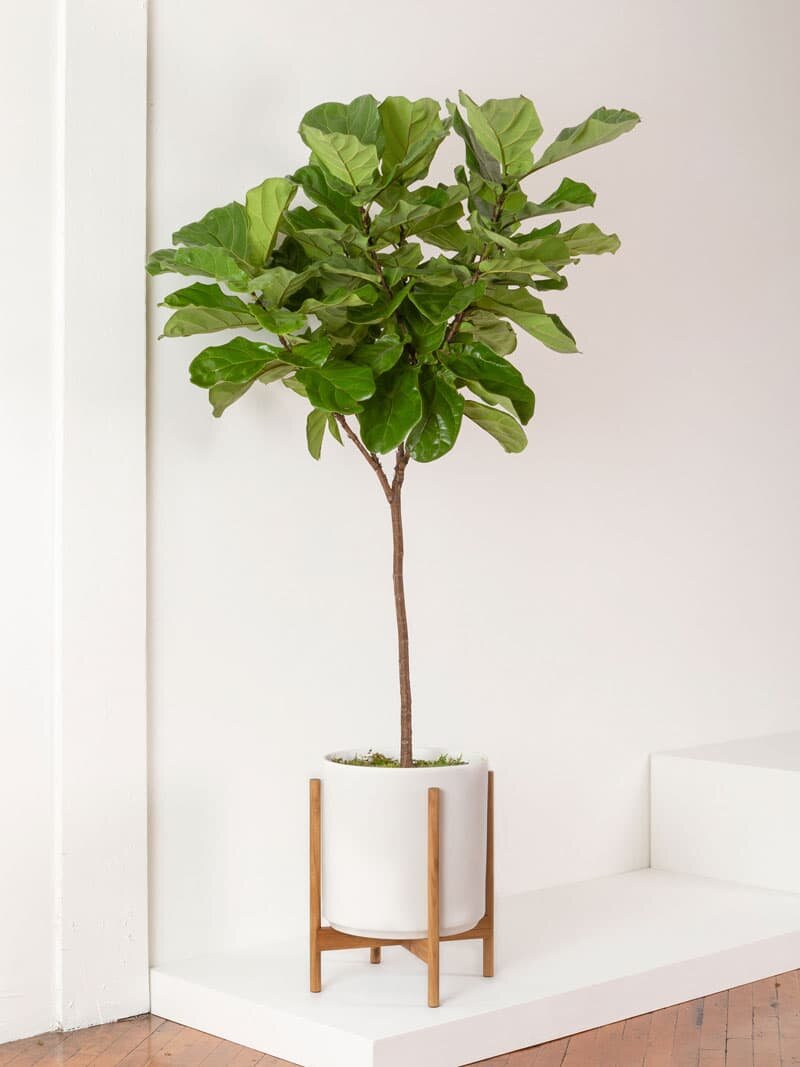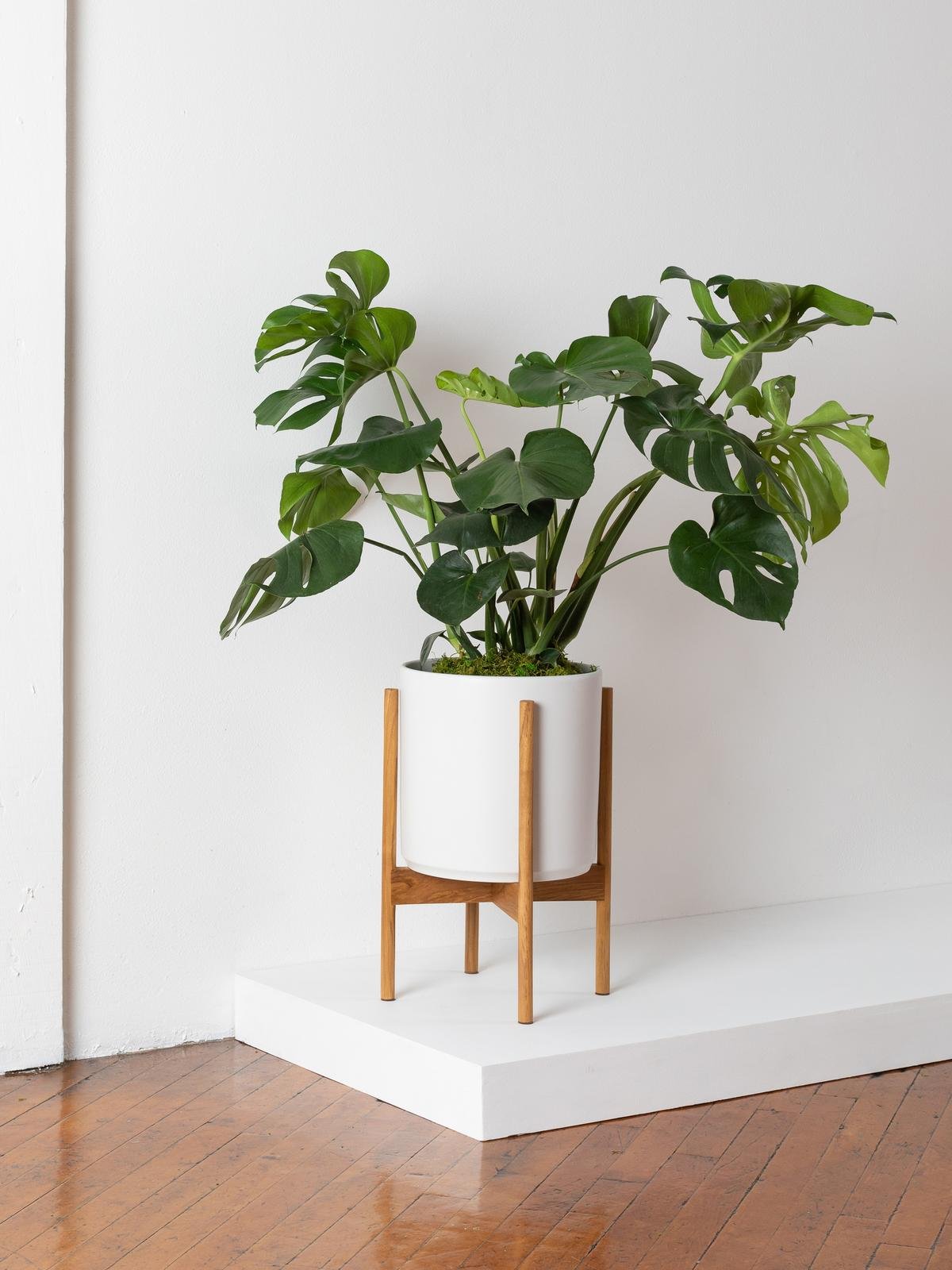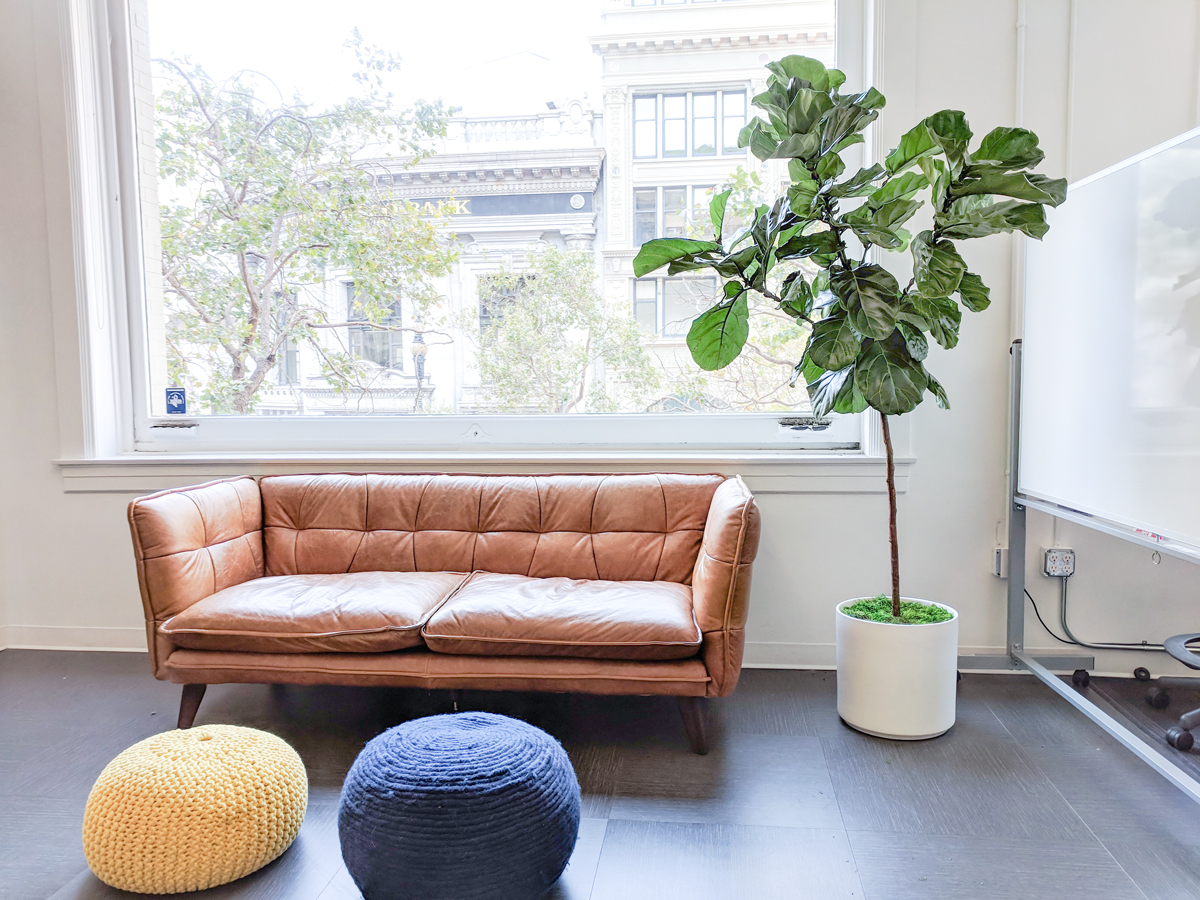The King of Hearts Anthurium is an easy care plant with bright red flowers that bloom year-round.
The Anthurium is a genus within the Araceae, or arum, family. They are related to other well-loved houseplants like philodendrons and peace lillies, and are a popular choice for homes, office spaces, and gifting because of their vibrant, exotic foliage, and year-round, colorful blooms.
A common question we face with Anthuriums is—if the flowers seem to last for ages, then are they real?! Read on to learn about the Anthurium and why itʼs the perfect cross between living houseplant and gorgeous cut flowers.
The flowers may look like flowers…
The “flowers” on Anthuriums last for ages, and bloom year-round!
The waxy, colorful, heart-shaped “flowers” we see on Anthurium plants aren’t actually flowers themselves -- they are spathes, or specially-shaped leaves to protect the smaller flowers inside! The spathe covers the cluster of tiny flowers, or the spadix, on the plant, which is actually the plant’s bloom. But due to their beauty and wide variety of colors, plant hobbyists and the general public often just refer to Anthuriums’ spathes as flowers.
Unlike many other flowering plants, Anthuriums can produce their “flowers” year-round -- so don’t worry if you need to cut off a bloom once it’s past its prime; you’re bound to see another one in no time!
They’re light lovers
While some Anthurium varieties are tolerant to lower light environments, most Anthurium plants -- including the popular Queen of Spades Anthurium -- do best in bright, indirect light. These sun-sensitive plants shouldn’t receive much direct sunlight, but should get filtered or gentle sunlight to help it photosynthesize.
Where to place your Anthurium
Most types of Anthuriums prefer spaces with ample humidity (more than 50 percent), given their native environment is the tropics. Your new Anthurium plant is likely to do well in a bathroom or similarly humid area of your home, especially if the space gets bright, indirect light.
If your bathroom is too dark or doesn’t have space for your Anthurium, the next best option is a space where your plant will get plenty of bright indirect light throughout the day, such as a few feet from an east or west-facing window. Try to increase humidity, using a humidifier, regularly misting it, or by grouping plants together. To encourage “flowers” and healthy leaves, and avoid placing the plant in direct sunlight.
Can Anthuriums go outside?
While Anthurium plants grow nicely outdoors in many climates -- especially tropical ones -- they will not survive in low temperatures during the winter. If you choose to keep your Anthurium outside, make sure you overwinter it in your home or greenhouse when it gets chilly out (under 55-60 degrees Fahrenheit)!
They’re sensitive to overwatering
Ensure you’re watering your Anthurium plant regularly, but avoid overwatering -- these flowering plants are sensitive to root rot. A regular watering cadence is key to keeping any type of Anthurium happy and healthy, as watering too seldomly can make it harder for the plant’s roots to absorb the water and nutrients it needs to grow.
You can fertilize for more flowers
One of the many benefits of growing or gifting an Anthurium is its low maintenance in regards to fertilizing; these extra nutrients are completely optional, and your plant is bound to do fine without. However, fertilizing regularly will increase the amount of blooms you see, opt for a phosphorus-rich, organic fertilizer and apply it sparingly only during the spring-to-summer growing season.
Find the perfect balance of light and water
Anthuriums are resilient, beginner-friendly plants for the most part, but even the heartiest of plants may come with challenges.
The most common issues are related to lighting and watering. If you’re noticing your plant has decreased vibrancy in color on its leaves, or brown spots on its foliage, your plant might be getting too much or too little light. Like many other aroids, Anthurium plants are susceptible to sunburn, so avoid placing the plant in overly sunny spaces like south-facing windows, or too close to a room’s interior. Over-fertilizing can also cause similar symptoms to sunburn, such as large, burn-like splotches on the leaves or crisping brown leaf tips.
The Queen of Spades Anthurium makes a beautiful addition to any decor.
If you’re experiencing problems with a brand new Anthurium plant, such as yellowing or dropping leaves, it might just be adjusting to its new home. Try to wait it out and let it acclimate, or try adjusting its lighting or watering schedule.
Anthuriums and pests
Pests can also pose a threat to your Anthurium plant. Common pests include spider mites, mealybugs, scale, and thrips, many of which feed on new growth. To treat pests, give your plant a good soak-through to try to rinse off the insects naturally, but you might also want to utilize a natural horticultural oil or spray, such as neem oil.
How to select a healthy Anthurium
While types of Anthuriums will vary in foliage color and shape, telltale signs of a healthy plant include firm, lush leaves, healthy, odor-free soil, and waxy, vibrant “flowers.” Floppy leaves or drooping stems might be a sign of a fungal infection on Anthurium plants, so make sure the plant isn’t wilted or showing any signs of a pest infestation.
Buying this flowering plant online as a gift
Anthuriums make excellent gifts, especially as replacements to cut flowers for Valentine’s Day, Mother’s Day, birthdays, or anniversaries. The plants’ colorful blooms last much longer than a generic bouquet does, so your loved one can enjoy greenery year round, as well as recurring pops of color or elegant white.
Ordering these flowering plants online for direct delivery is a great way to celebrate your loved one’s special day or let them know you’re thinking of them -- as well as make sure the plant arrives healthy, on time, and in bloom!
With Anthuriums, be careful with pets
All anthurium varieties are poisonous if eaten, and the anthurium plant’s sap can cause skin irritation, so keep these beauties out of the reach of pets and children.
Avoid purchasing your Anthurium from a garden center
It’s best practice to purchase your plants from a trusted supplier to ensure you’re receiving or gifting the highest-quality plants. Unfortunately, large garden centers and big-box stores tend to overwater their plants, and often aren’t able to keep them in optimal conditions given their large inventory and warehouse-like spaces.
There are more than 1,000 species in this plant family!
Anthurium is the largest genus in the Araceae family, encompassing more than a thousand species! Some of the most coveted, expensive houseplants on the market today are “rare” Anthuriums, such as the Anthurium Clarinervium.
A Symbolic Gift
Many types of Anthurium have special meanings or spiritual representations, such as abundance, sensuality, and hospitality. It’s just one of the many reasons why they make a great gift for countless occasions!
Queen of SPADES Anthurium
An elegant, giftable plant that gives colorful, long lasting blooms year-round.




































































